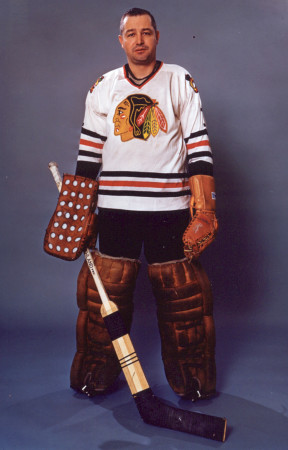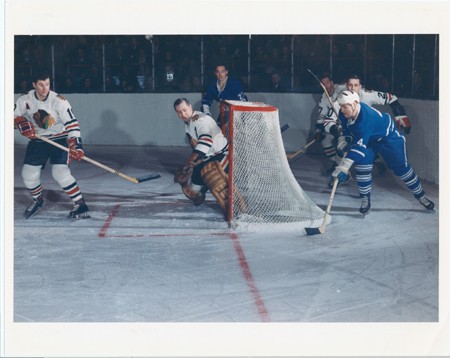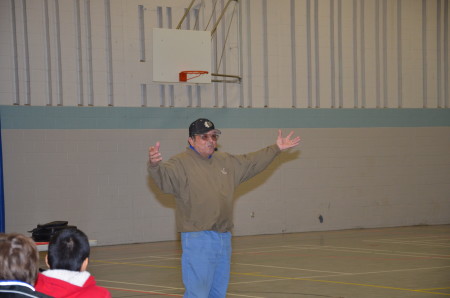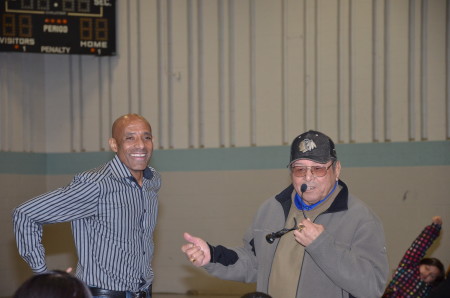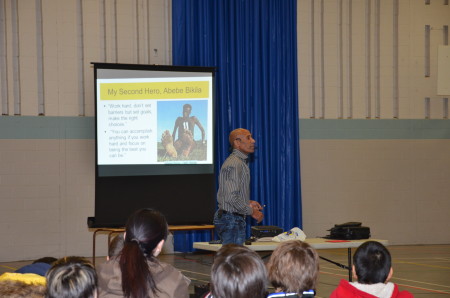There aren’t many unbreakable records in the world of sports.
Glenn Hall, however, surely owns one of them.
The Humboldt-born goaltender played every game of a National Hockey League season seven seasons in a row. His streak of 502 regular games played by a goalie will never be equalled.
“I went back to junior hockey and my five years in the minors and I believe it was a 1,026-game streak by my count,” Hall said from his home in May of 2020.
Hall’s NHL streak ran from October 6, 1955 thru November 7, 1962 when a back issue forced him out of the net in the middle of the first period. The streak extends to 552 consecutive games if you count playoff games.
So what makes Hall’s record streak so insurmountable? The last time any goalie played every game in an NHL season was Detroit’s Roger Crozier in 1964-65. It is almost unthinkable that a goalie would appear in each of his team’s games in the modern era — to say nothing of doing so repeatedly for more than seven years.
Hall’s streak was partly based out of necessity. For most of the Original Six era in the NHL, teams only carried one goalie on their roster.
“In a one goalkeeper system, you played even if you were hurting a little bit. Most of our injuries were puck-related,” Hall said. “I’m sure I was like any goalie, I enjoyed playing.”
Not having a back-up is, of course, not the most notable anachronism of the Original Six era when it came to NHL goalies. Hall, like nearly all of his contemporaries, tended goal without a mask for the duration of his streak and nearly his entire 18-season NHL career.
“The people who played before us, they played without a mask, so we felt that we could too,” said Hall who donned a mask for the first time in 1968, his second season in St. Louis and 15th full season in the NHL. “I’ve had a bunch of little nicks, but I got hit hard three times. If you get hit up (by a puck) in the forehead they don’t hurt like they do around the nose or the mouth. Those are the ones that really hurt. Our big concern was the eye injury. There were a lot of kids who had to quit playing goal because of an eye injury. You felt lucky that you got out of the game with both eyes.”
It wasn’t just that Hall was durable, he also maintained an incredible standard of excellence during his career that earned him the nickname Mr. Goalie. He was named a first-team all-star a record seven times and holds the record for most all-star game appearances by a goalie with 13. That is even more impressive when you consider that five of his contemporaries during the 1960s — Johnny Bower, Eddie Giacomin, Jacques Plante, Terry Sawchuk and Gump Worsley — have all joined Hall as members of the Hockey Hall of Fame.
While Plante is well-known for being the first goalie to wear a mask in the NHL, Hall was an innovator in his own right. He brought the “butterfly style” of goaltending to the NHL. Now the standard style young goalies are taught growing up, Hall’s penchant for dropping to his knees and covering the bottom part of the net was not well received.
“I caught heck for playing like that,” Hall said. “We were taught by people who had never played goal. They would tell you that you’ve got to stand up and you’ve got to do this and you’ve got to do that. And they had no idea how to play goal.
“They didn’t want me to play that way, but I knew if I could see the puck, I had a pretty good chance of stopping it,” added Hall who was noted for having incredible vision on the ice. “I could see the puck from down there and I found I could cover the four corners. I did what I had to do. I used to stand on my tip-toes to look over people too, as well as look underneath them. (The butterfly style) was just to see the puck. If you could see the puck you were in good shape.”
Hall won a Stanley Cup with Detroit in 1952 as the Red Wings spare goalie before he had made his NHL debut. In 1955 he was tasked with replacing Sawchuk in Detroit and won the Calder Trophy as the NHL’s rookie of the year. After four years in Detroit, he moved to Chicago and spent 10 years with the Black Hawks, winning the Stanley Cup in 1961. He would finish his career by playing four seasons in St. Louis.
In 1968, Hall won the Conn Smythe Trophy with the expansion St. Louis Blues. He is one of only five players to have ever won the Conn Smythe Trophy as the most valuable player in the playoffs while not winning the Stanley Cup.
Hall would go on to share his knowledge as a goaltender coach with the Calgary Flames and won a Stanley Cup ring in that role in 1989.
Before reaching the NHL for good in 1955, Hall played in the minor-professional Western Hockey League (not to be confused with the current major junior league of the same name) with the Edmonton Flyers. He and his wife Pauline settled in the area as Hall found off-season work in Alberta.
“We squirrelled away nickels and dimes to buy a little land,” Hall said. “I used to spend the summers at my grandparent’s farm and I loved the farm. Pauline came from a farm herself, so that’s what we wanted. We were very happy when we settled down here.”
Hall, 88, is keeping in touch with loved ones through the phone during the COVID-19 pandemic. His wife passed in 2009 and while there are no animals to tend to on the farm, he has always enjoyed bird-watching.
“I’ve got a couple of golf carts and I drive around and look at the birds. I’ve got a goose nesting about 50 feet from the house. She keeps me a little land-locked. I don’t want to disturb her. I enjoy seeing them and I enjoy seeing the goslings,” he said. “I’m very comfortable here. I’m the boss. I don’t have a dog or a cat, but even if I had a goldfish I would be second in command.”
Hall’s self-deprecating humour aside, he was rarely second in anything in his career.
Hall was the only player to be named a first-team all-star selection with three different teams in any major North American sport. Even since his retirement, that feat has only been matched by National Football League star Deion Sanders.
So with all of the records and accolades, what was Hall’s best memory from his playing career? Hall’s reply was profound in its simplicity.
“Oh, just stopping the puck,” Hall said.
Glenn Hall was inducted into the Saskatchewan Sports Hall of Fame in 1991.
